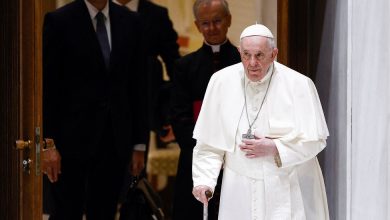Accused of Fakery, and Seeking Vindication on Everest’s Peak

KATHMANDU, Nepal — For two years, the Indian climber was banned from mountaineering in Nepal, accused of faking a summit of Mount Everest by doctoring photos of his ascent. A steep fall followed: A major award was revoked hours before he was to receive it from India’s president. People in his home village, he said, called him a fake.
Now, the climber, Narender Singh Yadav, has found redemption. On Wednesday, five days after he scaled Everest — documenting it with dozens of photos and videos taken from various angles, as well as testimony from Sherpas — he was handed a certificate by the authorities in Kathmandu, Nepal’s capital, attesting to his achievement.
Mr. Yadav, 26, said he reached the peak of the world’s highest mountain early on Friday, just a few days after the end of his ban — a six-year prohibition, applied retroactively to his disputed climb in 2016. As the news spread, people offered sweets to each other in the northern Indian state of Haryana, where he lives with his parents.
“This time I summitted in six days, without acclimatization,” Mr. Yadav, who maintains he did not fake his previous climb, said in an interview. “It was to show to all the people who defamed me. I have suffered a lot.”
“For me, May 27, 2022, is my rebirth,” he added. “It’s a new beginning.”
In 2016, after Mr. Yadav and another climber, Seema Rani Goswami, asserted that they had reached the top of Everest, Sherpas and other veteran climbers questioned their claim.
When Mr. Yadav’s pictures appeared on Facebook, mountaineers pointed out an oxygen mask with no tube connecting it to an oxygen tank, no reflections of snow or mountains in a man’s sunglasses, and limp flags in a place known for lacerating winds.
Nepal’s tourism department, the body responsible for expeditions, proceeded anyway with providing Mr. Yadav a certificate recognizing him as an Everest summiteer, based on briefings from a liaison officer and an expedition agency.
But the issue resurfaced in 2020, when the Indian government selected Mr. Yadav as a recipient of the Tenzing Norgay Award, a prestigious mountaineering commendation.
After the announcement, Indian mountaineers and Sherpas, including Mr. Yadav’s own expedition leader, took to social media, contending that he had faked the summit.
Tourism officials in Nepal later imposed the ban on Mr. Yadav, and the offer of the Tenzing Norgay Award was rescinded even as he was in rehearsals for the award ceremony. He said an Indian officer broke the news by informing him and his accompanying parents that he had to return the blue jacket given to athletes.
“I had done everything for the award,” he said. “But suddenly, they told me, ‘Deposit the coat and go home.’”
Mr. Yadav said his parents endured humiliation from his relatives and taunting from other villagers.
“Villagers called me fake, a fraud,” he said. “For them, it was a matter of shame.”
For years, Nepal, one of Asia’s poorest nations and the site of most Everest climbs, has been struggling to root out fraudulent summiteers. Tourism officials in Kathmandu said dozens of those faking their Everest credentials came from India, where successful climbers are often given national awards and jobs in state government, as well as other perks.
In recent years, expedition organizers say, the number of people, including amateur mountaineers, trying to climb Everest has increased. This has prompted Nepal’s government to start screening potential climbers more rigorously.
The fraudulent summiteers are often called out on social media by veteran climbers and Sherpas after they publish claims of their ascent.
Mr. Yadav, the son of an Indian Army soldier, said he had practiced his summit for two years during the coronavirus lockdown, when climbing at Everest was suspended. He stayed with expedition leaders and worked on his mountaineering skills, he said.
He arrived in Nepal in April, he said, and after getting permission, flew on May 21 to Everest Lukla, a small town in northeastern Nepal, and then went on to Everest base camp by helicopter.
Mr. Yadav said he started the expedition from base camp at around 1 a.m. on May 22 and reached the peak at 5:02 a.m. on May 27.
“I saw the first sunlight from the top,” he said. “And then I sang the national anthem of India.”





